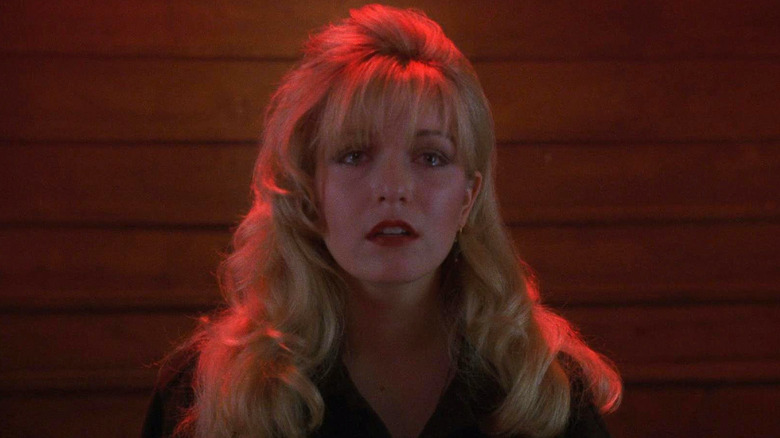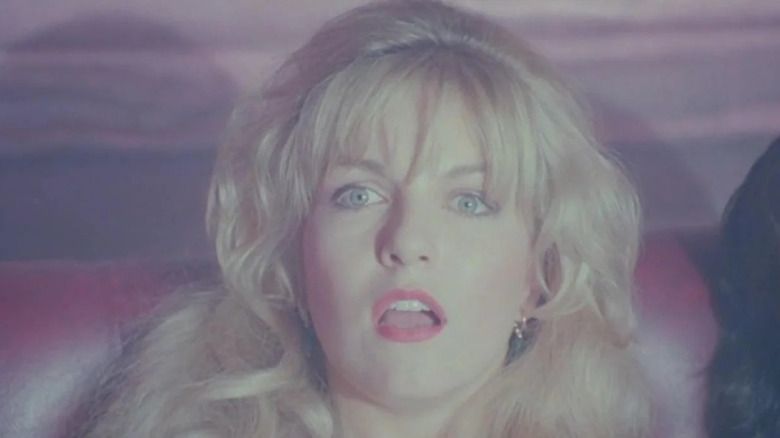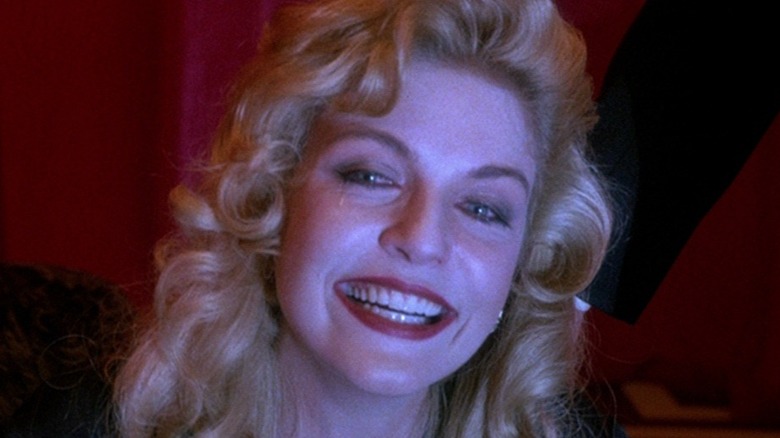Why Angelo Badalamenti's The Pink Room From Fire Walk With Me Is One Of The Greatest Pieces Of Movie Music
It deeply saddens me that Angelo Badalamenti, the composer behind "Blue Velvet," "Lost Highway," and "Mulholland Drive," has passed away at the age of 85. Badalamenti is to David Lynch what John Williams is to Steven Spielberg; they've each worked with other high-profile artists in their career, but their success is notably intertwined. The surrealistic temperment of Lynch's work feels oddly incomplete without Badalamenti's touch. When you start an episode of "Twin Peaks," the opening theme is the first thing you hear. Its soft melody, which crescendos into a triumphant upswing, makes the mountainside town feel like home.
With the diverse soundscape of Badalamenti, Lynch and series co-creator Mark Frost transported network television viewers into a mystery that was as charming as it was haunting. The series came to me at a critical point in my life, where I felt as if I were trapped in the same limbo as Agent Cooper (Kyle MacLachlan) waiting in the Black Lodge. I was enraptured by Lynch's vision of a world that always existed on the precipice of a dreamscape. It was thanks to Badalamenti's presence behind the keyboard, however, that the town of secrets came to life.
Badalamenti was instrumental in presenting a new layer of the series' atmosphere, so much so that I could choose any number of his "Twin Peaks" tracks to commemorate him with. "Laura's Theme," "Audrey's Dance," and "Dance of the Dream Man" are what immediately come to mind, but when I think of Badalamenti's best, it almost always comes down to his score for the 1992 prequel film, "Twin Peaks: Fire Walk With Me."
Enter the Pink Room
In "Twin Peaks," Laura Palmer (Sheryl Lee) is the enigmatic homecoming Queen found wrapped in plastic outside of the Martell residence, whereas in "Twin Peaks: Fire Walk With Me," she is presented with nuance and agency. Lee's vulnerability makes you want to reach through the screen and pull her out of her disturbing life, but as spectators, we have no other choice but to empathize with the slow-motion tragedy playing out in front of us. One of the scenes that best exemplifies this is the sequence in which Laura enters a world known only as the Pink Room.
With Donna Hayward (Moira Kelly) primed to follow Laura down her secretive rabbit hole, the pair is taken to a strobing hellscape across the Canadian border, where they're both subject to a sensory nightmare. From the track's opening notes, Angelo Badalamenti lets you know that this place is a hallucinatory inverse of something you would find in the Black Lodge. Where the Lodge's Red Room is clean and vibrant, the Pink Room is grimy, loud, and littered with an inhuman stench.
A state of hypnosis
I recently experienced a beautiful 35mm print of "Twin Peaks: Fire Walk With Me" at The Brattle theater in Cambridge, MA, and found myself transfixed by Angelo Badalamenti's music in a way I'd never felt before. The theater was filled with the incandescent red glow of the Pink Room, in tandem with the thrum of this unforgettable track. Much like Laura, we were all so intimately transfixed in a collective trance as Badalamenti's track enveloped us. The repetitive nature of the jazzy track blares over what everyone is saying, much like an actual nightclub, which further adds to the overwhelming disorientation of the scene.
"Twin Peaks" spends a great deal of time attempting to understand what Laura was up to prior to her murder, and in this sequence alone, we're witness to her truth, however uncomfortable it may be. It's the only place where she feels as if she has any power, that is, until she sees Donna taking her first steps down her tumultuous path. This is the moment where Laura breaks out of her stupor, and realizes the extent of how far she let this go.
She drags Donna out of the Pink Room by the skin of her teeth. If she can't save herself, Laura might as well prevent her best friend from making the same mistakes. As the track comes to a close, we get a closer look at the true foundation of this nightclub, which is littered in dirt, cigarette butts, and empty beer bottles. "The Pink Room" is an exemplary and abrasive piece of music that invites us to get swept up in Laura's rebellious spirit, while understanding how much it eats her alive. In life and death, Badalamenti understands Laura just as much as David Lynch does.
Badalamenti spoke for Laura when she couldn't
"Twin Peaks: Fire Walk With Me" takes the new and the familiar to wring a searing, gut-wrenching portrait of a tortured teenager whose angels have abandoned her. In a 2017 interview with the Criterion Collection, Sheryl Lee talked about how Angelo Badalamenti's score for "Fire Walk With Me" is so deeply entrenched in the character that it's how she experiences Laura:
"I love Angelo so much, as a person and as an artist. I couldn't have been given a better gift or tool for the development of a character as his music. Even today, if I'm somewhere, and all of a sudden I hear just the first five seconds, I'm instantly, I feel that character. It's potent music, and it just works very, very well for me to use as a way in."
In "Fire Walk With Me," when we finally arrive at the small town of Twin Peaks, the familiar theme swells on the image of Laura walking to school, as if it were an old friend. The difference this time is that we're conscious of Laura's untimely fate. There are no differences in the melody, yet its altered context rings like a haunted death knell. It reminds us that her murder is imminent, among everything else.
It's not often you can pair one of the screen's most emotionally-compelling performances with a composer as compelling as Badalamenti. "The Pink Room" can fill you with a hallucinatory sense of dread, while "The Voice of Love" cuts your emotions into ribbons. It can't be understated how monumental a talent we've lost.
"Twin Peaks" Fire Walk With Me" is currently streaming on HBO Max and The Criterion Channel.


